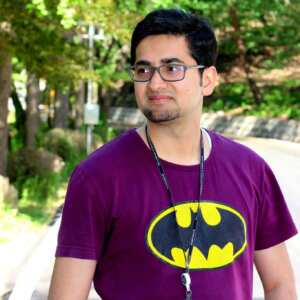
The informal settlements are by no means marginal to the city and will remain there for the foreseeable future. It's crucial to perceive informal settlements as a strength, not a threat, and to acknowledge their potential.
Muhammad Mashhood Arif is a professional Urban Planner, Transportation Planner, and Architect. At present, he is based in Belgium.
Currently, he is a doctoral candidate in the Faculty of Architecture at KU Leuven, Belgium. He received a Master’s Degree in Transportation Sciences and specialized in “mobility Management” from the University of Hasselt (2015-2017), Belgium. He has done his undergrad in City & Regional Planning (2010-2014) at the University of Engineering and Technology, Pakistan.
He initiated his research on the two most significant issues in Pakistan, housing and transportation planning. During his undergrad, he wrote his thesis and published an article on Improving the bidding power of the poor through low-cost housing: Case of Lahore, Pakistan. His Master’s research at UHasselt aimed at achieving learning from Seoul, which is undoubtedly one of the world’s best transportation systems. He went to South Korea for an in-depth understanding of the problem and case studies. He presented his Master’s Thesis on the topic: Comparison of Mode Choice Behavior for the towns of Bundang and Ilsan, South Korea, and graduated with his Master’s with great distinction.
In his professional experience, he worked at national & international urban planning and transport organizations for up to three years. He has worked as a researcher at the Korea Institute of Science & Technology (KIST), where he conducted Agent-Based Modelling to develop and forecast transportation needs and demand at the city scale. He also worked as a Senior Transportation Analyst at Urban Unit Pakistan. In collaboration with World Bank, he developed the framework for new connectivity corridors in relation to CPEC (China–Pakistan Economic Corridor. Moreover, he worked as an Assistant Director at Lahore Development Authority, Urban Planning Public Organization, where he planned, designed, developed, and executed city-level policies.
Motivated by everyday dealing with and experiencing the life of informal dwellers as a part of his professional job, Muhammad Mashhood Arif got entirely submerged by the thinking that these settlements could be more of a solution than a problem. In the wake of this, he initiated his Ph.D. research on exploring the insights into the public spaces in informal settlements that eventually led to their improvement.
His Ph.D. research “Multilayered Public Spaces as Productive Assets towards more Sustainable Informal Settlements: The case study of Lahore, Pakistan” explores the relationship between people and public spaces in the informal settlements of Lahore. His research attempts to understand how public spaces in informal settlements are appropriated and the ways in which the people of settlement produce, consume, transform, express, and give meaning to those spaces.
His research emphasized that the informal settlements are by no means marginal to the city and they are here to stay. The demolition and replacement of most informal settlements are now widely regarded as both impossible and unnecessary and with a few exceptions. The research is centered on the necessity of viewing informal settlements as a strength rather than a threat. In order to accomplish this, the study addresses a number of factors that emphasize the concept of sustaining these communities. The study enlightens upon the potentials the informal settlements hold, and recognizes them. In addition, the work investigates the production and construction of public spaces in and around these communities, as well as their significance and precariousness in the same setting.
The main goal of this research is to introduce a completely new concept and work in the context of Pakistan, which will be useful in resolving the issue of informality. Furthermore, the research provides insight into how, when viewed as a rich and layered notion, public spaces might promote an incremental urban transformation in such neighborhoods toward higher sustainability.